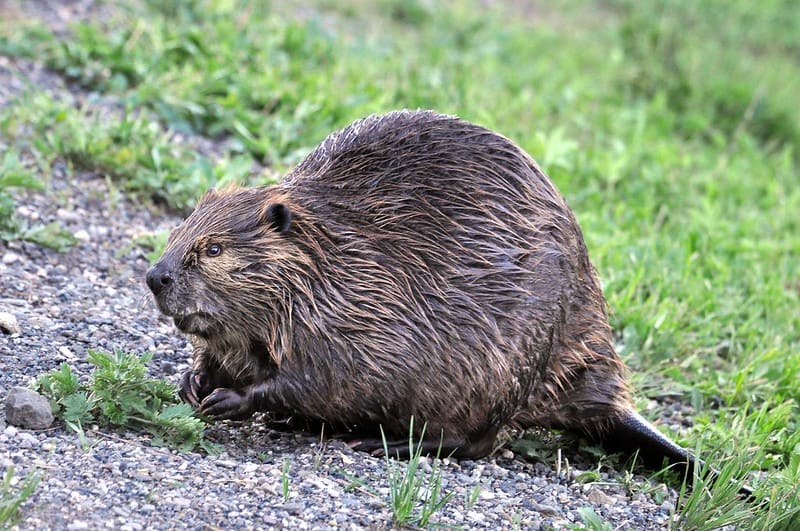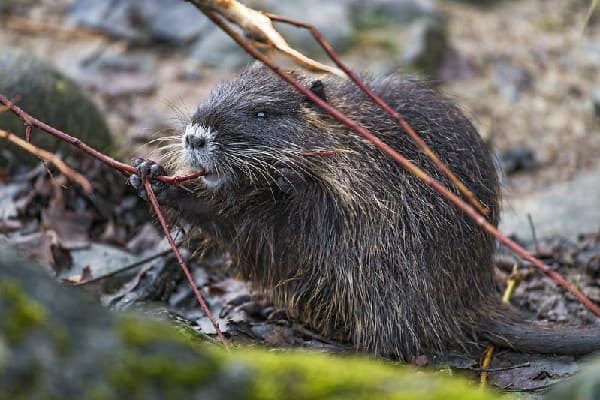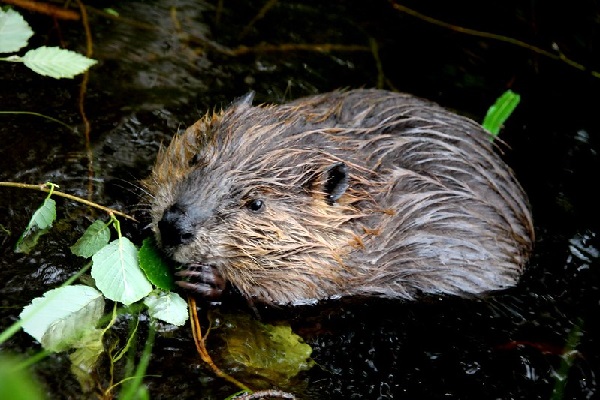
Do beavers eat fish? People may believe beavers eat fish because they build their homes near trees along rivers and on the edges of other bodies of water. Beavers are semi-aquatic herbivores. They eat not only trees but also different types of food. Some plants are consumed by beavers, while others are used to construct their dams and lodges.
The fact that beavers don’t consume a lot of pond life may surprise you, given their frequent proximity to water. Their diet is quite specialized. How, then, do such massive rodents thrive on a restricted diet?

What do Beavers Eat?
North American and Eurasian beavers are renowned for constructing lodges and dams in water environments. You would be partially correct if you have ever pondered what beavers eat and think of “trees.”
Adult beavers are substantially bigger than conventional rodents, as anyone who has witnessed one in the wild can tell. You might ask how much a beaver needs to consume daily since smaller rodents need to eat a lot. But first, what exactly counts as beaver food?

Bark and Twigs
Beavers don’t consume the entire tree but rather the cambium or inner bark of trees. It is the layer of actively growing tissue under the bark. It is a nutritious layer that helps a tree to grow vertically.
Additionally, they regularly eat the twigs and foliage of many trees, particularly red maple and willow, and prefer aspen trees. These trees have softer wood which is easier for the beaver to gnaw through.
In the springtime, beavers will consume more twigs than bark since new growth is beginning on trees. The buds are a favorite treat for beavers at this time of year. They will also eat leaves, flowers, and aquatic plants.
Aquatic plants
Beavers spend a lot of time in the water because they are semi-aquatic animals. Their adaptation to consuming aquatic plants makes sense. Eating aquatic plants makes up the most percentage, while bark only makes up the least of the beaver’s diet in the summer.
Beavers move far more quickly in the water than they do on land. Beavers can submerge themselves for up to 15 minutes at a time. Additionally, they have translucent eyelids that improve their underwater vision. Beavers are excellent divers and find plants that grow below the water’s surface thanks to all these adaptations.
Beavers have the edge over other terrestrial mammals when food is scarce because they have access to water plants. Even when most of the land’s flora has died off in the winter, beavers can still reach fresh, green foliage such as water lilies, cattails, and pondweed.

Vegetation
Beavers will supplement their diet with soft-green plants during the summer. In the woodlands near their lodges, they will consume the green shoots, buds, and leaves of the trees and bushes. Beavers prefer to eat vegetation close to the water’s edge and are not picky about the type of vegetation they consume. Beavers can quickly flee from nearby predators by foraging close to bodies of water.
Beaver primarily consumes higher-up browsing vegetation. But they also consume lower-level grazing vegetation. Common plants that beavers eat include weeds and grasses. The green flora that beavers eat provides them with a lot of nutrition. Additionally, the more they eat, the more fat they can store for the winter.
Fruit and vegetables
Beavers will benefit from any berries, fruits, or vegetables they come across while foraging. Beavers can acquire all the vitamins and minerals they need from fruits and vegetables. These minerals support the health of beavers.
Beavers will primarily encounter fruits that they discover on trees. They enjoy eating apples and cherries in particular. Beavers will consume vegetables as well if they come across them while foraging. Their favorites are veggies with big green shoots and soft leafy greens such as carrots, lettuce, and broccoli.

Fungi
Fungi and lichen are frequent food sources for beavers because they frequently grow on tree bark. Particularly during the winter, these foods are a fantastic source of nutrition. Beavers can easily consume mushrooms since they are mushy.
It is rich in potassium, which helps the beaver’s appetite for salty foods to be satisfied. Additionally, mushrooms are present on the forest floors where beavers graze. Beaver dams help create damp conditions ideal for several mushroom species to develop.
Grains
When hunting for vegetation, beavers will happily indulge in any grains and crops they come upon. They have the best chance of surviving by consuming as much food as possible in the summer and fall. This implies that field crops like corn, wheat, and oats could be a target for a foraging beaver in the area.
Poop (Cecotrope Poop)
Beavers eat their feces because they are coprophagic. Even though it seems pretty disgusting, this is very advantageous for the diet of beavers.
In actuality, beavers can produce two different types of feces because they are hindgut fermenters. The first kind is normal poop, also known as firm feces, which comprises completely digested food. Beavers do not consume these.
The second kind is referred to as cecotrope or soft feces. The majority of the foods in a cecotrope are fermented and undigested. These are produced in various bacterially active regions of the cecum of the beaver’s colon. Beavers will only consume cecotropes.

Beaver milk (Baby Beaver)
Kits, or baby beavers, depend on their mother’s breast milk as their primary source of nutrition. Kits exclusively consume beaver breastmilk during the first two to three weeks of life.
After that, their parents will start introducing solid foods by taking them on foraging outings. Delicate aquatic plants and the soft cambium layer of tree bark are the first foods they will consume. After about six weeks, kits are entirely weaned and can eat solid beaver food.
What food does the beaver eat in winter?
Beavers consume the food they have stored up in winter, usually wood.
They consume the buds and twigs of their favorite birch, willow, alder, and poplar trees and shrubs, but just the outer layers of the bark. They will also eat any fruits or vegetables they come across while foraging. Additionally, they will eat fungi and lichen to get their needed nutrients. Lastly, they will eat grains if they can find them.
How do beavers Hunt and Forage their food?
Beavers are primarily nocturnal creatures, so they do most of their hunting and foraging at night. During the day, they will spend most of their time in their lodge or dam, swimming around or caring for their young. At night, they will venture out to find food.
Beavers hunt for food and explore their surroundings using their excellent sense of smell. If they come across a potential food source, they will taste it to see if it is something they want to eat.
Beavers are excellent swimmers who use this skill to help them find food. They will swim around in ponds and streams, looking for aquatic plants to eat. They will also dive underwater to find roots and tubers to eat.
Professional Beaver Removal
If you have beavers on your property, it’s essential to take action to get rid of them and prevent more damage. We at AAAC Wildlife Removal services, an industry leader in wildlife removal, can help you remove beavers and prevent them from returning.
Our thorough understanding of the biology and behavior of beavers can assist you with difficulties you may have. We will work with you to create a custom plan that fits your specific needs and ensures that your beaver problem is taken care of for good. Contact us today to learn more about our beaver control services!
Conclusion
In conclusion, beavers are fascinating creatures with a diverse diet and a lot to offer the world. They are intelligent and have many unique adaptations that help them survive in their environments. Beavers also play an essential role in their ecosystems, allowing them to create habitats for other animals and improve water quality. Let’s take a moment to appreciate these magnificent animals and all they do for us!







